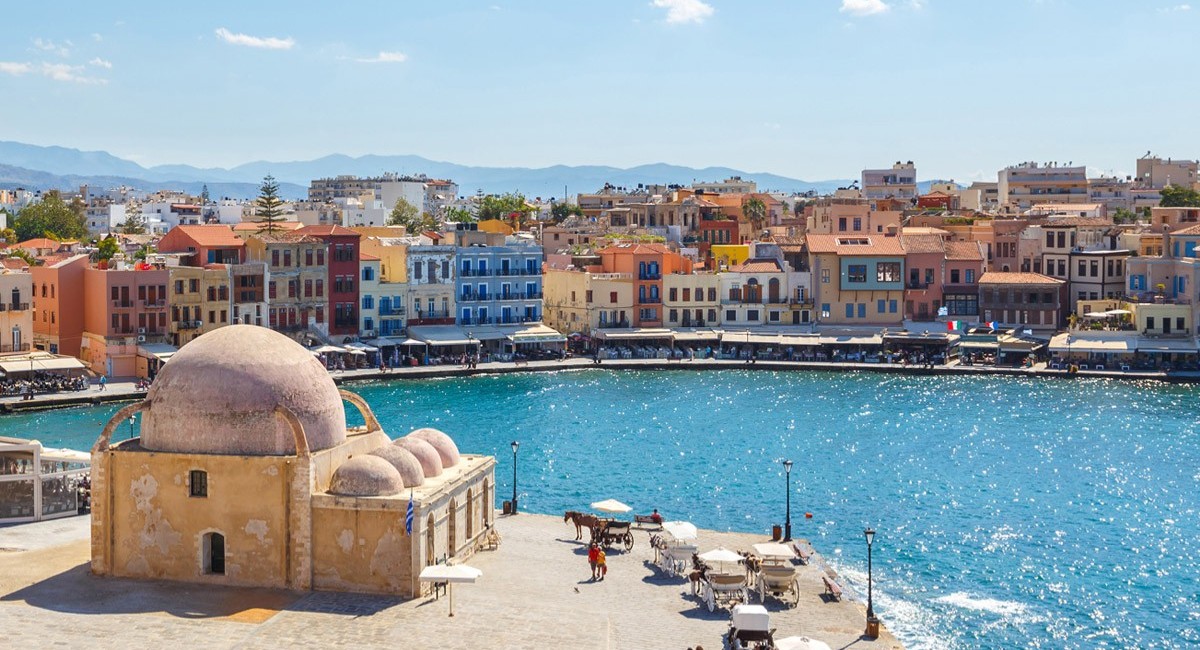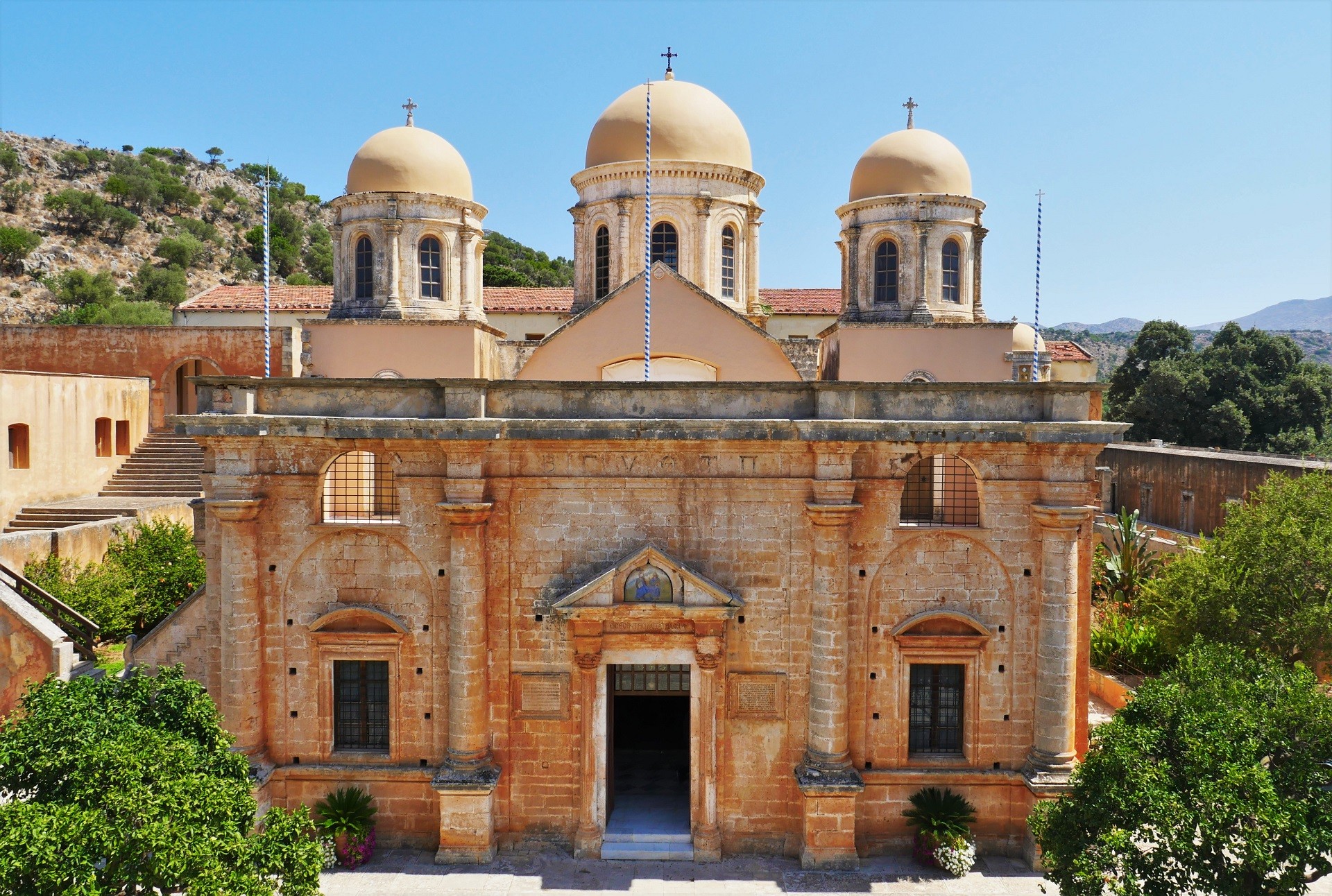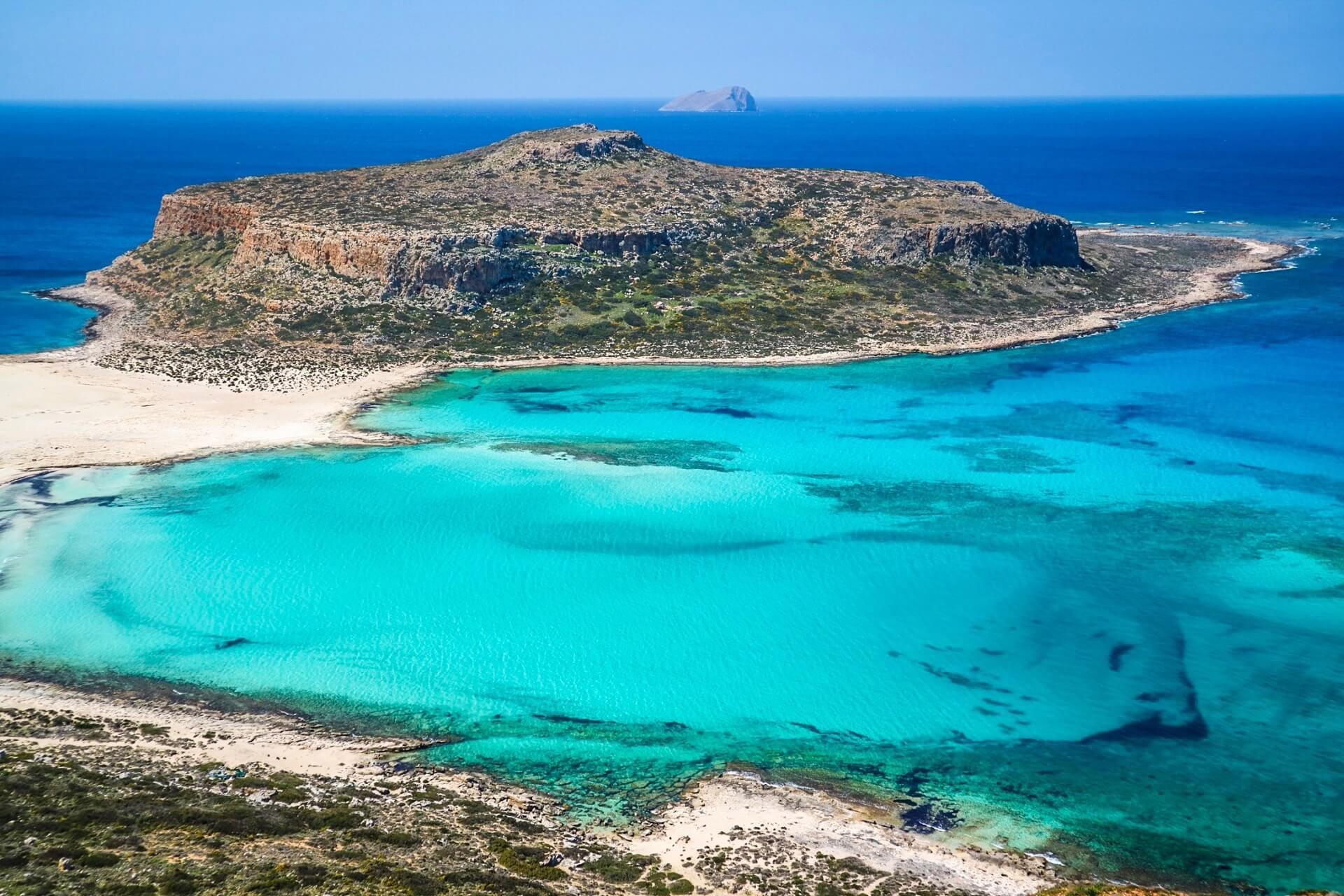GETTING TO KNOW CHANIA

Interesting facts about Chania
- Based on archaeological findings, Chania lies on the ruins of an ancient town, possibly “Kydonia”, that was founded by Minos and was one of the three principal Cretan cities in 2200-1900 BC.
- Kydonia developed in size so much that it can be easily compared to Chania in the early 20th century.
- Chania is considered as one of the most beautiful cities of Greece and the most picturesque city of Crete.
- Chania Town was the center of much activity during World War II. In fact, this charming town was forcibly occupied by the Germans during the Second World War.
- The airport is named after Ioannis Daskalogiannis, a Sfakian hero who was skinned by the Turks in the 18th century.
The city in a few words...
The Westernmost region in Crete with its romantically picturesque capital is a big favorite of everyone who visits. It’s full of beauty, history, and charm. It also has a diverse topography, from rugged mountains to a world-famous gorge, and heavenly beaches. The town of Chania is famous for its Venetian harbor and the old town with its winding alleys filled with bougainvillea and jasmine. The old city is full of authentic character, with charming vernacular architecture, a landmark mosque, the Egyptian lighthouse, and the absolutely gorgeous Venetian boatyards, which now serve as cultural venues. The nightlife caters to every taste, from elegant port-side cocktails and dining to casual music tavernas and late night venues. There is also excellent shopping. Chania is known for traditional leather craft, and there are also excellent boutiques for island-friendly fashions and crafts. For a splurge, there are also fabulous jewellery stores.
What's worth a visit in Chania?
- Chania Public Market
The Public Market is an impressive building, in the town center, built at the beginning of the present century (1911) and houses grocery stores, butchers' shops, a fish market and vegetable shops.
The Public Gardens, next to the Market, are ideal for those in search of shade and tranquility.
- The Lighthouse
The lighthouse at the old harbor of Chania is the most recognizable part of the city, posing at all travel books of Crete. The story of the lighthouse starts a long ago, although its present form dates back since the Egyptian Occupation of Crete (in the early 19th century).
The Venetians, under the threat of the Turks, in the late 16th century, started fortifying all towns throughout Crete. In the period 1595-1601 they made great interventions at the port of Chania. At the center of the breakwater, they built the bastion of St. Nicholas, which together with the fortress of Firkas, could protect the harbor entrance. At that time they also built the lighthouse.
- Souda islet
Souda is the name of the small island that stands like a guard in the entrance of the gulf of Souda., a natural harbor protected by the high mountains the east of Chania, on the northeast side of the port of Chania. On its northwest side, there is another smaller and round island, named Leon, recorded on Venetian maps as the "island of rabbits"
In ancient times, the two islands were called Lefkai (White), as Stephen from Byzantium, recorded. Their name came from an ancient Greek legend in which it is said that the Sirens were defeated by the Muses in a music game and worried so much, that their feathers fell from their shoulders, got white and remained in to sea and the islands were shaped. There was a monastery of St. Nicolas on the islet before it was fortified. The islet was called "Fraronisi" until it was fortified, when it was renamed "Souda" after the gulf. The old monastery of Agios Nikolaos is still surviving.
- Tzagarolon Monastery
The monastery of Agia Triada of Tzagarolon is one of the richest and most beautiful monasteries in Crete. It is built near the airport of Chania, in the position Tzobomylos of the Cape Melecha and at the foothills of Stavros Mount. The distance from Chania is only 15km.
The monastery was built by the Venetian nobles Jeremiah and Lawrence Tzagarolo. Jeremiah was a famous scholar of his era with rich education and was a friend of the Patriarch of Alexandria, Meletios Pigas. Jeremiah himself was a candidate for Patriarch of Constantinople. Moreover, Jeremiah designed and built the monastery complex of the monastery, being affected by the architect Sebastiano Serlio from Verona, Italy.

And around the city?
- Kournas lake
Kournas Lake is the only freshwater lake in Crete. Lake Kournas was known as Lake Koressia in antiquity but later took its current name from the Arabic word for lake.
The lake is in a beautiful landscape, lying in a valley among the hills, about 4 km from Georgioupolis in Chania Prefecture (west Crete).
Lake Kournas is relatively small, with a maximum length of 1,087 m and a maximum breadth of 880 m. It covers an area of 579,000 sq. m. and is generally shallow, 22.5 m at its deepest point, while it lies approximately 20 m above sea level.
- Samaria gorge
The Samaria Gorge is the most famous trekking gorge in Europe and a part of the European E4 hiking trail. Thousands of tourists flock here daily in the summer season to walk from the top to the bottom. For many visitors, it is the sole purpose of their visit to Crete. The length of the gorge reaches 14.5km and takes almost 5-7 hours to hike from Xyloskalo at Omalos plateau to Agia Roumeli beach, depending on the trekking pace.
- Elafonisi beach and island
Elafonisi is a magical place that consists of a small islet full of white and pink sandy beaches, which is very close to the main busy (during Summer) beach.
You can get to the Elafonissi island on foot because the waters are shallow, sometimes without even getting one's toes wet, and therefore is ideal for families with small children. It is named by the word "Elafi", which means deer in Greek because people years ago discovered that you can get easily to the islet on foot like a deer that walked to it.
The island, which note is not to be confused with its namesake Elafonissos in Peloponissus, is a natura 2000 protected area. Moreover, Elafonissi is the only Greek appearance on a Tripadvisor list of the world’s 25 best beaches for 2014.
- Balos Lagoon
Balos is famous for its turquoise waters, the wild natural beauty and the beautiful exotic scenery. During the summer, it is visited by thousands of people, who arrive mostly by the ferries running from Kissamos port. If you do not like crowds, you’d better avoid to visit the beach in July and August. Also, a perfect idea is to arrive at Balos in the morning, before the boats arrive from Kissamos. These few hours of remoteness in such a heavenly place will remain etched in your memory forever.
You can also visit the 7 villages of Apokoronas as you explore eastern mainland Chania! Or take a private hike in the Imbros Gorge & explore Sfakia with lunch.

What to eat in Crete
The Cretan Diet is famous and some say miraculous! It is the original Mediterranean diet -tasty and nutritious, ensuring good health and long life! This type of nutrition has helped create a combination of foods and lifestyle which provides a unique diet that is highly beneficial, it prolongs life and helps preventing many of the modern diseases that shorten the lives of millions of people every year in the West.
The Cretan Diet is both simple and wholesome.
It features plenty of fruit and vegetables, beans and grains in abundance, olive oil as the principal fat, moderate drinking of wine and raki, herbal teas like Greek Mountain Tea (which is said to be a "cure for everything") or Dittany of Crete (said to be an aphrodisiac)! Also, in includes honey and yoghurt, occasional use of lean red meat and low to moderate consumption of dairy foods, fish and poultry.
Come and sample these flavours on our various gourmet tours:
- Cooking Class Chania-The Real Cretan Cooking Experience
- Walking Food Tasting tour in the town of Chania
- The Path to Cretan Beers Tour - Chania
Click here and prepare your notes: These are the foods you MUST try as a visitor in Crete!
